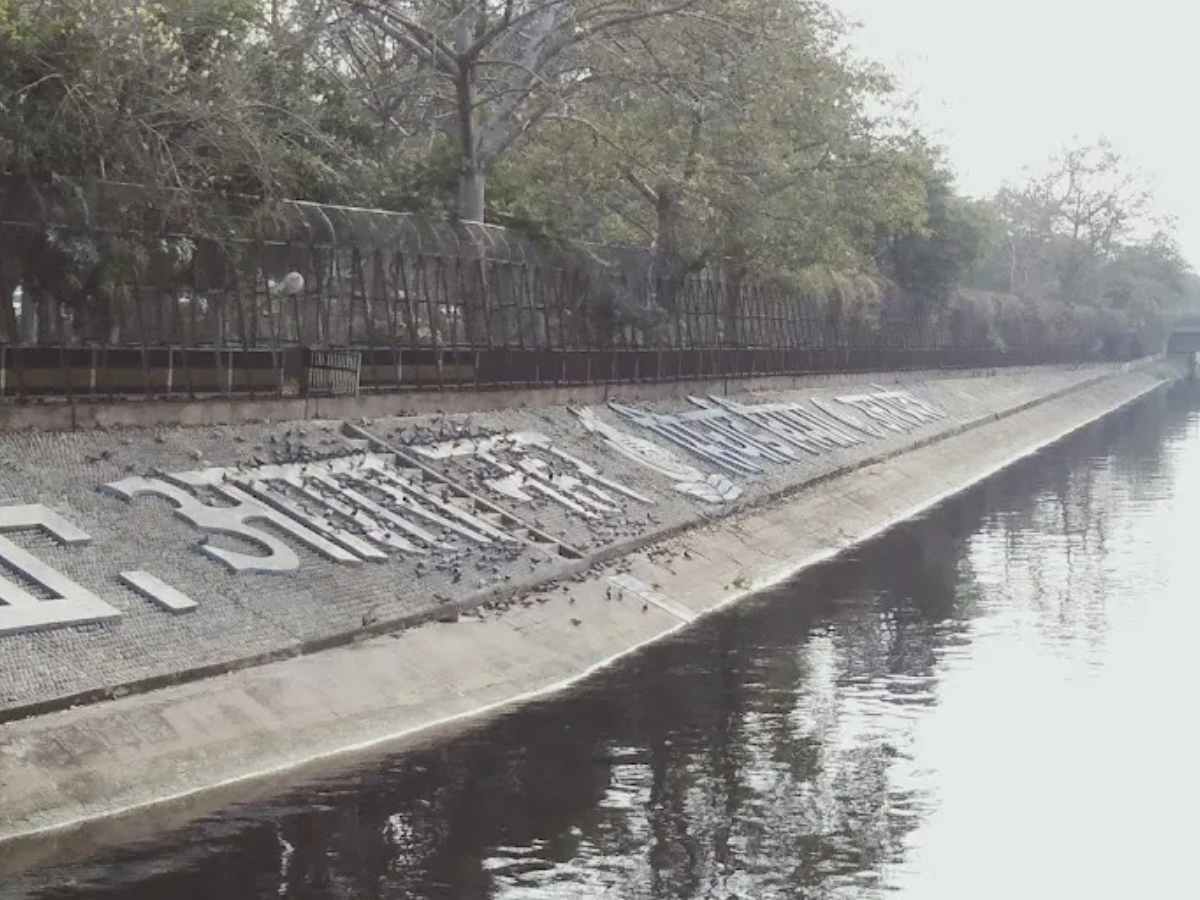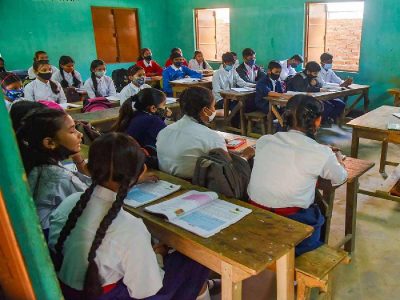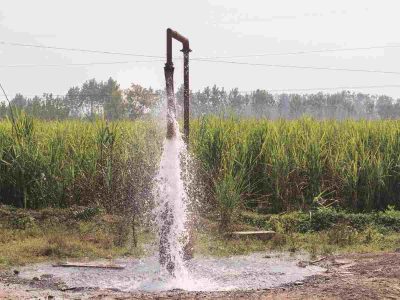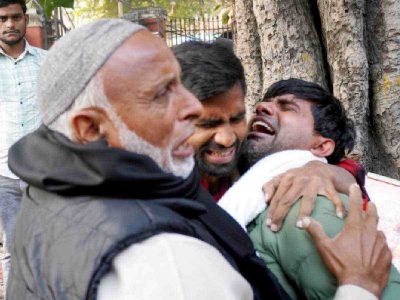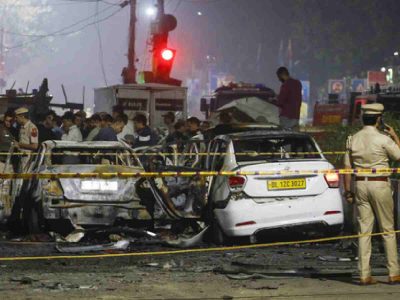Delhi: The 22-km stretch of the Yamuna River between Okhla and Wazirabad has become a grim dumping ground for the dead. Once a thriving agricultural floodplain, Yamuna Khadar was home to generations of farmers who cultivated its nutrient-rich soil. However, in recent years, the land has been caught in a relentless cycle—illegal encroachments, followed by official demolitions, forcing residents to vacate their homes and fields. With the displacement of its people, what was once a hub of rural livelihood has turned into an expanse of eerie isolation.
Today, the once-bustling flood plains lie abandoned, their emptiness creating the perfect cover for crime. With Delhi Police patrols sparse in these desolate zones, criminals exploit the area’s seclusion to dispose of bodies, away from scrutiny.
A scan through the Zonal Integrated Police Network (ZIPNET) database reveals an alarming pattern—many of the unidentified bodies recovered in these areas have a First Information Report (FIR) attached to them, indicating they either died in accidents or under suspicious circumstances, while others remain too decomposed to determine the cause of death.
Also read: Delhi Police busts child trafficking gang; 4 held, 2 children rescued
During an investigation by Patriot, several hotspots for such grim discoveries emerged— including the Yamuna Khadar region, the area around Agra Canal in Okhla, Deer Park, Kanjhawala’s Y Point, Khubram Park in Prem Nagar, Buddha Park in Wazirabad, and Shanti Van near Geeta Colony. These locations have repeatedly witnessed incidents of murder and the abandonment of newborn babies— tragically, always found dead.
Yamuna Khadar: The river of death
On October 29, 2024, a body bearing multiple stab wounds was dis covered near a pipeline in New Usmanpur, close to the Yamuna Khadar. Dressed in a red shirt with black dots and black trousers, with a black thread tied around his right ankle, the man lay without an identity.
“We tried to look for more leads, but it was a dead end as there were no identification marks or documents on the victim,” said a police officer handling the case.
The general diary report, filed at 1:20 AM, now metaphorically gath ers dust in a local police station. The five stab wounds on the left side of his chest remain an unre solved mystery.
Residents claim such occurrenc es are common. “Proper residential areas and colonies are far from the Khadar region. At night, the entire plains remain deserted. Even when a crime happens or a body is found, witnesses are rare. We avoid the Khadar area after sunset,” said Ram Prakash Singh, a resident of New Usmanpur.
The Yamuna’s bank here is around six kilometres from the nearest house, according to Google Maps.
A Delhi High court order from July 8 directed the Vice Chairman of the Delhi Development Authority (DDA) to clear encroachments from the Yamuna’s banks, riverbeds and its drains. However, the absence of habitation has only intensified the area’s reputation as a crime dumping ground.
Shanti Van: A crime scene waiting to happen
The flyover connecting Geeta Colony to Raj Ghat’s Shanti Van is notorious for its gruesome accidents. However, with the arrival of 2024, a new horror unfolded—a murder case remains unsolved after a body was discovered on the roadside.
On the intervening night of November 30 and December 1, an unidentified man, aged between 25 and 30, was found dead in a service lane near the flyover. His belongings remained intact, but he carried no identification. Blood stains were found on nearby railings, and a broken stick with a sharpened end lay close to the body.
“Upon inspection, multiple wounds were found on the head, neck, face, and other parts of the body. The deceased had lost an immense amount of blood,” stated the FIR.
Near the body, police discovered a bag with a blood-stained dupatta. Inside were utensils, mustard oil, and matchsticks—ordinary belongings, now part of an extraordinary mystery.
The victim, clad in a designer outfit, was unrecognisable—his face disfigured from repeated attacks. Despite initial investigations, police remain clueless about the perpetrator.
“This area is overrun by homeless people at night. Near the crime scene, there was a temporary tent with an earthen chulha used by them, but no one was there when the crime occurred,” said a senior police official.
He noted that while major crimes were rare in this locality, the incident might indicate a disturbing new trend. “This area doesn’t have many gated societies. Crime rates have been limited to minor snatchings, but this case raises serious concerns.”
Parks: Silent witnesses to abandoned lives
Unlike the deserted flyovers and riverbanks, Delhi’s parks have become silent witnesses to a different kind of horror. Here, it is not just the homeless who perish but newborn babies, abandoned and left to die.
Khubram Park in Prem Nagar, Deer Park in Hauz Khas, and Buddha Park in Wazirabad have all become tragic dumping grounds for newborns. According to ZIPNET records, many were found hidden in bushes, trash bins, and other concealed spots. These harrowing discoveries offer a chilling glimpse into a society where unwanted infants meet an unceremonious end.
Some of these infants are found in an advanced state of decomposition, while others show signs of severe malnutrition. Identifying them is often an impossible task. “The perpetrators know what they’re doing. This is technically infanticide. They choose secluded parks where surveillance is limited, ensuring they escape punishment,” said a senior police officer.
Disturbingly, ZIPNET data indicates that most of these abandoned infants were female.
During the period from October 1, 2024, to January 1, 2025, 907 unidentified bodies were in Delhi. Out of the total, 40 were found to have died of suspicious circumstances, including road accidents at pivotal junctures. According to ZIPNET data, the bodies of four male and seven female infants were also found abandoned at spots across the national capital.
Pertinently, many of these bodies were in advanced stages of decomposition. Thus, the specific cause of death may not have been found out.
Canals of Death: Where bodies vanish
From the Munak Canal in the northwest to the Agra Canal in the southeast, Delhi’s waterways have become dumping grounds for the dead. Many bodies go unnoticed, unidentified, and sometimes, undiscovered for months.
The police stations at KN Katju Marg in Rohini and Kalindi Kunj in South East Delhi are frequently burdened with the grim task of recovering bodies from these canals.
“The real challenge is the state of the bodies. When submerged, decomposition accelerates, making post-mortem and identification more difficult. Some bodies we retrieve have been decomposing for weeks or months,” said a senior official.
These concerns were echoed by Sanjay Bhatia, Additional Commissioner of Police, Crime Branch. “The Yamuna River, canals, and drains are our worst enemies when it comes to solving crimes. Most bodies are dumped in these locations, making tracking and identification extremely difficult.”
These canals serve as graveyards for both adults and newborns. The extent of decomposition often ensures that justice remains elusive.
A city that forgets its dead
The bodies found in Delhi’s forgot ten spaces—its rivers, parks, and underpasses—are more than just forensic puzzles. They are silent markers of neglect, abandoned by the city in both life and death. Their presence raises uncomfortable questions: Who were they? Who mourns them? Who will demand justice?
For now, these bodies drift in and out of police files, their cases gathering dust like the stories that will never be told. And as the Yamuna’s waters continue to carry the weight of the nameless dead, the city moves on, indifferent as ever.

